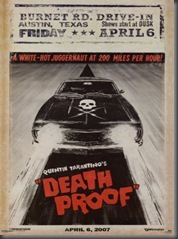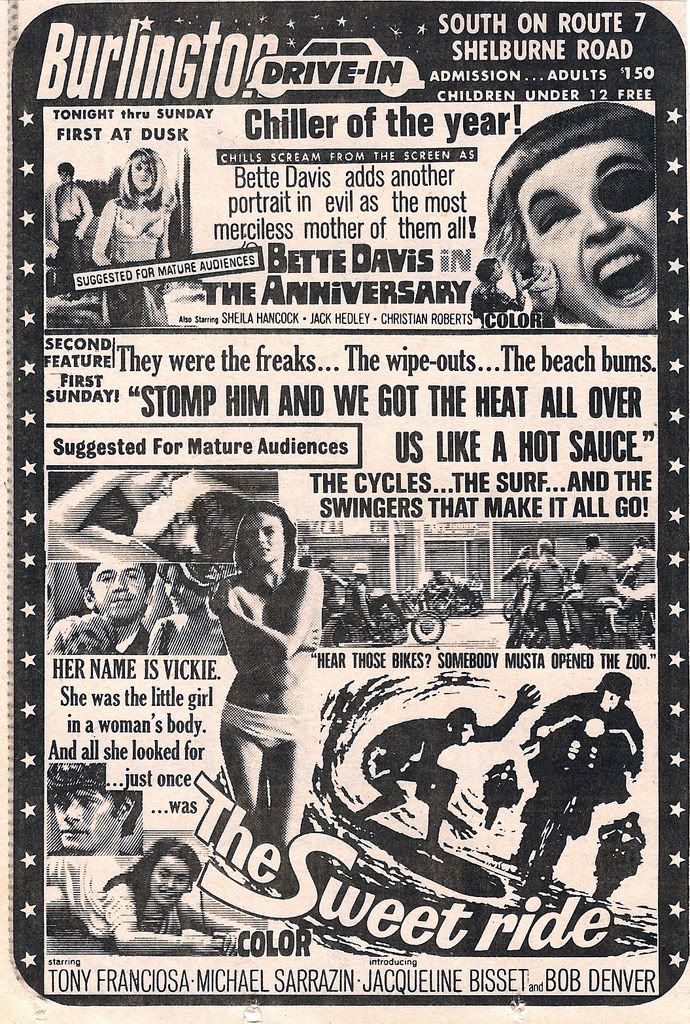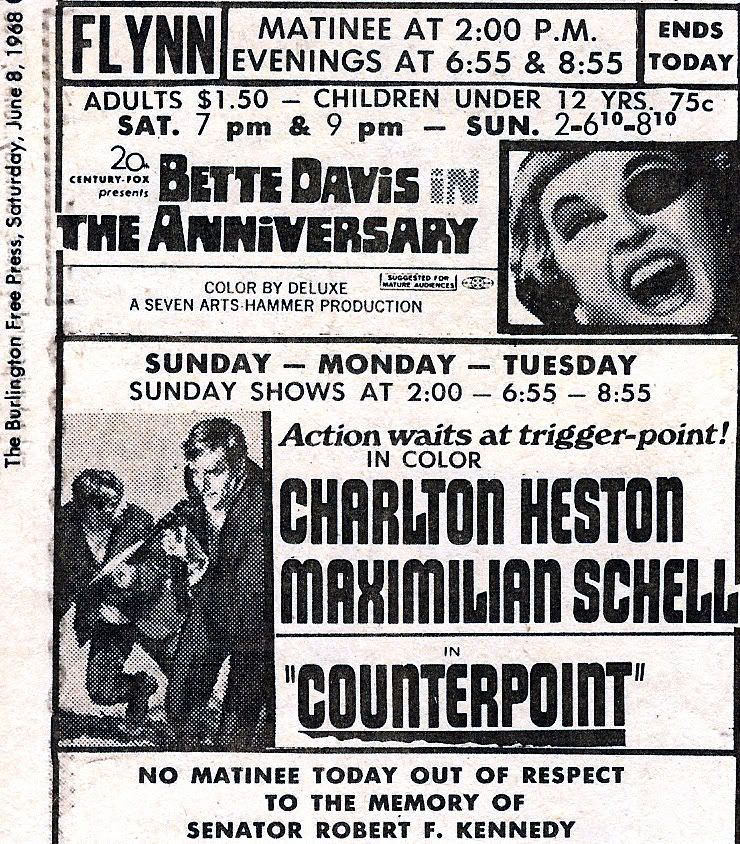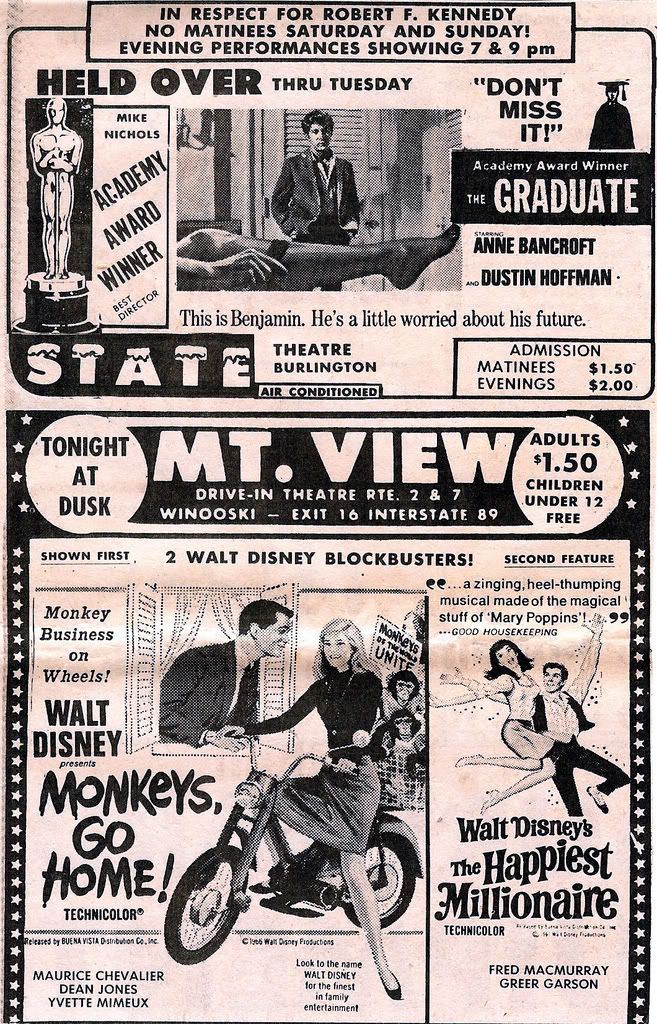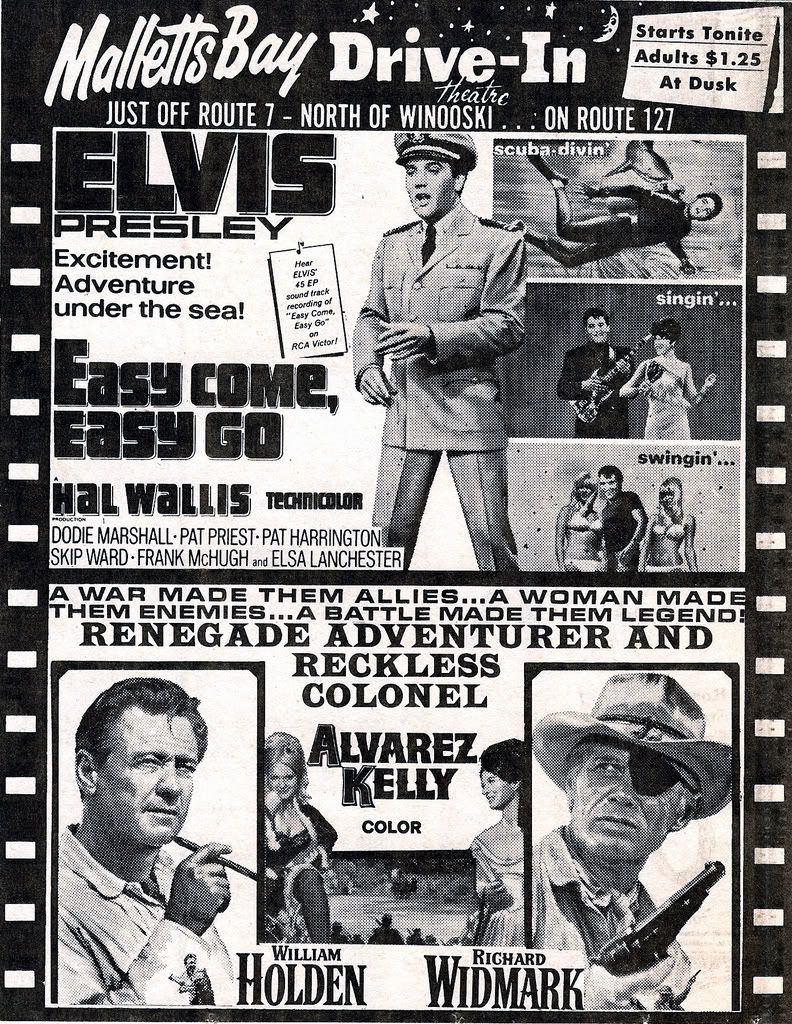
Bloody Well Done
'Eastern Promises' continues David Cronenberg's man-tasticly violent partnership with Viggo Mortensen
By Gina Carbone
Much was made of the “Reservoir Dogs” look-away. How Quentin Tarantino moved the camera to the left while Mr. Blonde cut the cop’s ear off, forcing us to imagine the blood, the pain, the carnage, while we just hear the screams.
David Cronenberg is no such tease. He’ll show us the blood -- oh yes, he would’ve given us a close-up of that ear and followed its progress to the floor. In “Eastern Promises” he has two men’s throats slit -- one in jagged amateurish chops like Junior slicing Mom’s burnt Christmas roast, the other a long swift cut that momentarily leaves the wound bloodless, tilting the gaping head back like the open mouth of a Muppet. Canada’s horror maestro may have graduated into classy A-list Oscar bait, but he’s still not above a good knife in the eye. Squish! All the better that the knife be wielded by a naked man covered in tattoos and, by this time, blood and bruises. Masculinity on display in all its raw, slippery power.
 What can he say -- the man has a history of violence. And he’s getting better. There’s nothing subtle about blood, yet Cronenberg has shown fluency in the nuances of human behavior and how to surprise viewers long after surprises are expected. “Eastern Promises” is another story of good men who aren’t all good (or strong) and bad men who aren’t all bad (or weak) and the women who get screwed in the mix. It’s set in London, concerns Russians and stars an American, an Australian, a Frenchman, an Irishwoman and a man born in East Prussia, which is now Russia, so … close enough.
What can he say -- the man has a history of violence. And he’s getting better. There’s nothing subtle about blood, yet Cronenberg has shown fluency in the nuances of human behavior and how to surprise viewers long after surprises are expected. “Eastern Promises” is another story of good men who aren’t all good (or strong) and bad men who aren’t all bad (or weak) and the women who get screwed in the mix. It’s set in London, concerns Russians and stars an American, an Australian, a Frenchman, an Irishwoman and a man born in East Prussia, which is now Russia, so … close enough.The title could cover a dozen meanings, one being the promises told to poor young Eastern girls about a better life in the West. Tatiana is one of those girls and the story begins in the dark in the rain (get used to that) as the pregnant, drugged up 14-year-old faints, gives birth and dies in a hospital. Her sole possession seems to be a Russian diary, which ends up in the hands of Anna (Naomi Watts), a well-meaning midwife who wants to help the baby find its living relatives.
She follows the diary’s trail to a restaurant run by sly, charismatic Russian mob boss Semyon (Armin Mueller-Stahl) and his simple, arrogant son Kirill (Vincent Cassel). An alternate title could’ve been “The Driver” since the main character -- besides Anna -- is Nikolai (Viggo Mortensen), a smart Siberian thug who works with the father and son and repeats “I’m just the driver” as an excuse for staying out of conflict. (Doesn’t work -- that nude scene? You might’ve heard of it since Mortensen’s ballsy four-minute blood-bath is already earning a cine-reputation to rival the “Dogs” ear.)
All of that plot is just brush strokes. There’s much more to Anna’s story -- like why she’s staying with her beleaguered mom and protective but casually racist uncle. A lot more to Semyon than the kind grandfather act. More to Kirill -- like the unforgivable name he’s called, worse than rapist, murderer, drug dealer, thief, sex trafficker. And, as you might guess, a lot more to Nikolai than driver. Like, Wolverine-worthy hair.
Mortensen and Cronenberg had their first pairing in 2005 with the subtle character study “A History of Violence.” Critics lathered the film, director and actors in praise. Fine, deserved, but better to have saved the real cinematic kudos for “Eastern Promises,” which is not only also an intriguing character study but a cultural think-piece and enjoyable mob thriller. There isn’t a weak link in the egalitarian cast -- no distractingly bad accents, no showboats -- and Steven Knight’s script is sharp and deep enough to reward them all.
For all his three-dimensional humanism, it’s clear Cronenberg likes his men to get their hands dirty and enjoys watching small-boned women dish out sass. In short, everyone in a Cronenberg film has to have the same kind of balls he does or they won’t make it out alive. Sounds like a bloody good plan from here.
Gina Carbone still thinks of Viggo as “the blouse man” from “A Walk on the Moon.”

Too Many Promises Broken, With Some Beautifully Fulfilled
By Lars Trodson
David Cronenberg’s “Eastern Promises” is so deeply satisfying, so emotionally rich, that watching it is almost like reading a novel. The story is sumptuous both verbally and visually. Bursts of action are set against much slower, meticulously crafted scenes of such quiet conversation and facial expression that viewers will feel as though they have spent time with real people, in a real place.
“This is not our world,” says the mother of the young woman at the heart of this mystery. “We’re ordinary people.” And that’s what the best movies do: they take us ordinary people into places where we would not ordinarily go. And that is what this movie does so astonishingly well.
There isn’t a move, a verbal inflection, or a shot out of place. Once in a while we get to see a movie that a director or writer has been leading up to his entire career, and this may very well be that movie for David Cronenberg. It would be no shame if he didn’t top it, but it will be thrilling to watch his work continue to evolve.
The setting of “Eastern Promises” is London, but this London is a dark and closeted place, and it is home to a Russian crime family. These are cruel people, transplanted by choice or by birth or by the long arm of international law, but the story here is not about political or social corruption, it’s about moral rot, and it is about the bright spots of redemption that sometimes come with these stories.
At its center are four actors who embody their characters so beautifully that they effortlessly (for us, the watchers) guide us into their milieu, a setting at once unsettling and familiar, and they are the tour guides we need. These are not characters, not symbols, not icons, but rather people functioning the best way they know how, even if their function in life is to be horrifying and disgusting. The actors are Viggo Mortensen, Naomi Watts, Vincent Cassel and Armin Mueller-Stahl. All are exemplary, trading in the surest of performances that are so complementary to Cronenberg’s sure-handed direction.
 The story is a simple one, thank goodness. At the outset we witness a mob hit, a disconcertingly difficult and bloody killing, and suddenly we switch to a local pharmacy where a glassy-eyed girl wanders up to the prescription counter. We know something is wrong, and the pharmacist says he cannot give her methadone without the necessary papers. But she is hemorrhaging blood, and the next thing we know we are at the hospital where nurse Anna (Watts) is part of the medical team trying to save her. It turns out she’s pregnant. The young mother dies, her name is Tatania and she’s Russian, but the baby survives. The only momento left behind of this horror is a diary, written in Russian by Tatania, which tells the story on which all of the following events hinge. Anna’s instinct is to find a home for the baby. There is almost nothing more powerful or determined than when a mother (even if not biological) wants to protect a child. Remember that.
The story is a simple one, thank goodness. At the outset we witness a mob hit, a disconcertingly difficult and bloody killing, and suddenly we switch to a local pharmacy where a glassy-eyed girl wanders up to the prescription counter. We know something is wrong, and the pharmacist says he cannot give her methadone without the necessary papers. But she is hemorrhaging blood, and the next thing we know we are at the hospital where nurse Anna (Watts) is part of the medical team trying to save her. It turns out she’s pregnant. The young mother dies, her name is Tatania and she’s Russian, but the baby survives. The only momento left behind of this horror is a diary, written in Russian by Tatania, which tells the story on which all of the following events hinge. Anna’s instinct is to find a home for the baby. There is almost nothing more powerful or determined than when a mother (even if not biological) wants to protect a child. Remember that.Anna, although obviously English, turns out to be of Russian descent. She lives with her English mother (Sinead Cusack, in a vivid performance), and her decrepit uncle Stepan (played by the acclaimed director Jerzy Skolimoski), who is Russian and, in the throes of end-life depression, drinks too much and feigns bravado by claiming to have once been in the KGB.
It is Stepan who at first refuses to read the diary because it was taken off a dead person. But Anna fans through the little book to see if she can find a clue to Tatania’s story, and finds a card from a place called the Trans-Siberian Restaurant. Out of curiosity and naiveté, she locates the restaurant – an upscale place that seems to cater wholly to a Russian clientèle – and meets the silkily ugly Semyon, played by Armin-Muhller Stahl. He not only owns the place but happens to head up the local chapter of the crime family. We quickly understand he has some connection to Tatania and her pregnancy and death.
That’s enough plot.
So many movies today seem excruciatingly unimaginative -- in their characterizations, in the writing, in the plot, in the settings, in the photography -- that the attention to life in this Russian enclave in London seems not only exotic but vivid. Cronenberg flawlessly integrates images of food and dress and the sounds of music and language and violence, so much so that we feel as though we’ve wandered into this place. Just one detail seems perfect: most actors playing characters who are asked to speak a foreign language almost always do so haltingly. They only speak three or four words in the non-native tongue at a time, giving you the feeling they are feeling their way through the language. Not so here; all the actors speaking Russian seem to do so instinctively, and it strips away the idea that we are seeing actors you are somewhat familiar with playing such unfamiliar roles.
 For his part, Mortensen may have finally found the role that separates him once and for all from Aragorn, the part he so memorably played in “The Lord of the Rings” series. In “Eastern Promises” he plays Nikolai, the chauffeur to the family headed up by Semyon and his psychotic son, Kirill (Cassel, whom you may remember from the idiotic Jennifer Aniston movie, “Derailed”). In this film, Mortensen looks like a cross between classic Kirk Douglas and early Mickey Rourke -- not bad role models at all. Mortensen has a sleek, elegant physique, and he exudes calm and the kind of sharp, feline reactive nature you’d expect to see in a criminal who is comfortable being just that.
For his part, Mortensen may have finally found the role that separates him once and for all from Aragorn, the part he so memorably played in “The Lord of the Rings” series. In “Eastern Promises” he plays Nikolai, the chauffeur to the family headed up by Semyon and his psychotic son, Kirill (Cassel, whom you may remember from the idiotic Jennifer Aniston movie, “Derailed”). In this film, Mortensen looks like a cross between classic Kirk Douglas and early Mickey Rourke -- not bad role models at all. Mortensen has a sleek, elegant physique, and he exudes calm and the kind of sharp, feline reactive nature you’d expect to see in a criminal who is comfortable being just that.Throughout the picture he wears a puckish, almost surly pout, and you can read that as either being disinterested or disgusted by what he sees and does. Actors very, very rarely control themselves the way Mortensen does here, and what he has done, finally, is create one of those masterful movie performances that are sure to wander through your mind long after the film has finished.
There has been a lot of talk about Mortensen’s naked fight scene in the Turkish bath, and it has unfortunately been described in the most lurid terms -- as though the sheer audacity of it was the only point. This is the crudest reading of the scene; if you do not find yourself squirming while watching it -- which is exactly what violence in movies is supposed to do -- then you are inured to the empathetic unpleasantness that such scenes are meant to convey. It’s a set piece, to be sure, but one wholly in keeping with the design and mood of the picture; it plays out organically and it is memorable not only because of the staging but because we know such a guy would find himself in precisely that kind of predicament.
The power of this scene is also a testimony to the craft of film editing (by Ronald Sanders, who also did Cronenberg’s “History of Violence” and “Spider”), and throughout the picture the editing is superlative. Scenes that are contemplative flow sweetly, and the expositions in violence are jarring -- without using the hyperactive jump-cutting so popular today. Cronenberg and his cinematographer Peter Suschitzky obviously talked about how camera angles can enhance a mood, as opposed to how a roving camera can be a showcase in and of itself. Suschitzky captures the brutality of the violence, but his camera also turns warm and inviting in those scenes that require such a mood. There are parties at the Trans-Siberian restaurant that convey lovingly the creepily loving atmosphere in which they take place.
 Naomi Watts doesn’t need my confirmation as a great screen actress. Here, she is beautiful without being ostentatiously so (unlike her friend and fellow Australian Nicole Kidman, who apparently was weirdly sexed up in the recent “The Invasion”), and her quiet performance very early on exudes the toughness she is required to show more explicitly later in the film. Her nurse Anna is both frightened and determined.
Naomi Watts doesn’t need my confirmation as a great screen actress. Here, she is beautiful without being ostentatiously so (unlike her friend and fellow Australian Nicole Kidman, who apparently was weirdly sexed up in the recent “The Invasion”), and her quiet performance very early on exudes the toughness she is required to show more explicitly later in the film. Her nurse Anna is both frightened and determined.So much of the film’s emotion is played out in the facial expressions of the actors. Cronenberg and Suschitzky don’t get too close, which is exactly why movies of this caliber need to be seen on the big screen. When Semyon nonchalantly starts to ask Anna personal questions, such as where she lives and works, the camera focuses on the questioner -- in this case Armin Mueller-Stahl -- and we see the malevolent intent in his pursed lips and cold eyes. It is only after these odd questions that Cronenberg cuts back to Watts’ Anna, and her face is slightly contorted to show the creeping unease we all are feeling. How satisfying is it to have an actor portraying exactly the same emotions the audience is feeling, and how wonderful for a director to explore those feelings. Film students should take note. Film editing can deftly and beautifully add to the experience, and here everything is working to complement not just the mood but the story.
One last note on Vincent Cassel (son of actor Jean-Pierre Cassel). His Kirill is a sociopath and pedophile, and nothing in his performance makes us like him, or empathize with him. What we do understand, however, is his rage and his self-loathing. I won’t, and wouldn’t, say this was enough to make us forgive what he does. But what we do know at the end of the movie is that we have met Kirill, and we do not want to see him again.
Cronenberg, however, is another story. We do want to see his name on a marquee again, and we will. It is thrilling to watch an artist mature, and while some of his movies have been baffling (“Naked Lunch”, “Crash” -- not the recent Oscar winner) he has almost always been interesting.
In a strange way, “Eastern Promises” reminded me of the two late movies by John Huston: “Prizzi’s Honor” and “The Dead.” Nothing in those two movies even remotely resembles the content of “Eastern Promises”, but in those films Huston seemed to allow decades of filmmaking just to naturally take over, and we saw a showboating director relax enough to trust his instincts and let the more humanistic and easy rhythms of his craft take over.
In “Eastern Promises” -- aided, I should say, by a lovely script by Steve Knight (who penned the great Stephen Frears’ highly praised “Dirty Pretty Things”) -- Cronenberg takes the invaluable lessons he has learned in 30 years of low-budget and genre filmmaking and alchemizes them into the kind of supremely felt movie experience that is not only exhilarating but quietly profound.
Truth and Dare
By Mike Gillis
“Eastern Promises” is a dare.
 It’s a dare from director David Cronenberg to tour an uncomfortable realm of violence, head on and far from the beaten path. But it’s also Cronenberg daring himself to use some of his best if not slightly shopworn tools to deeply ponder the riddle of violence.
It’s a dare from director David Cronenberg to tour an uncomfortable realm of violence, head on and far from the beaten path. But it’s also Cronenberg daring himself to use some of his best if not slightly shopworn tools to deeply ponder the riddle of violence.He succeeds, almost completely, and marvelously.
“Eastern Promises” hurls us immediately into a London we don’t know, where the Russian mob rules. It is an instantly convincing setting, buoyed by Cronenberg’s decision to exclude most of the familiar London we know exists outside this little but harshly structured world.
It soars, though, thanks to stunning performances from its principal actors: Viggo Mortensen as a Russian mobster with his share of secrets; Naomi Watts as a London-born nurse who delivers the baby of a dead Russian prostitute, which propels the story; Vincent Cassel as the son of Russian mob kingpin Seymon, played with superb restraint by Armin Mueller-Stahl; and supporting roles from Sinead Cusack as the nurse’s mother; and director Jerzy Skolimowski as the nurse’s Russian uncle, Stepan.
Cronenberg has built a career exploring the history of violence, and its uneasy relationship with good, evil and sex. He’s not afraid to spill blood, copious amounts, to get to the point.
And he spills blood in “Eastern Promises,” by the gallon and mostly by the rough edge of a blade. But the lingering violence -- a few moments more on a knife to the eye than most can stomach -- is tempered with some remarkable flourishes of restraint. For instance, the diary found on the dead mother by Watts’ character, is heard in scattered voiceovers, sometimes blending with another character reading it aloud. Its the horrific account of a 14-year-old prostitute, which spill some mob family secrets. It would have been easy for Cronenberg to use flashbacks to tell this story, but hearing it read or narrated, and repeating the names of characters we already know, is more disturbing than what Cronenberg is able to show us elsewhere. It is the perfect balance.
Much has been said about a bath house fight scene in which Mortensen bares all. It would be a shame if the scene is remembered only for that detail. It should stand out as the best example of Cronenberg’s skill at peeling back preconceptions of movie violence and finding the heft of real-world horror. It is one of the most tense fight scenes I have ever seen.
Cronenberg takes two missteps. Both involve throat slashings. His intent, I’m sure, is to demonstrate the physical difficulty of such a primitive act of violence. The first victim’s throat is sawed more than cut, which strives for realism, but actually misses an opportunity to explore the true wreckage of violence. Cronenberg shoots both scenes straight-on, and lingers there, not so much for effect, it seems, but to relish in the effect. Cutting to the side, or back and forth for reaction, would have even prolonged an already horrible moment. The second slashing is worse; Cronenberg has his victim open his scarf and jacket for us so we're able to clearly see the delayed effect of a precision cut.
Those are small gripes, though.
The picture's violence is necessary, a setting itself. “Eastern Promises” reminded me of the filmmaking of the 70s and 50s, where story and characters are interwoven into a rich tapestry of smart plot with plenty of threads to explore.
It’s Cronenberg’s best to date.









